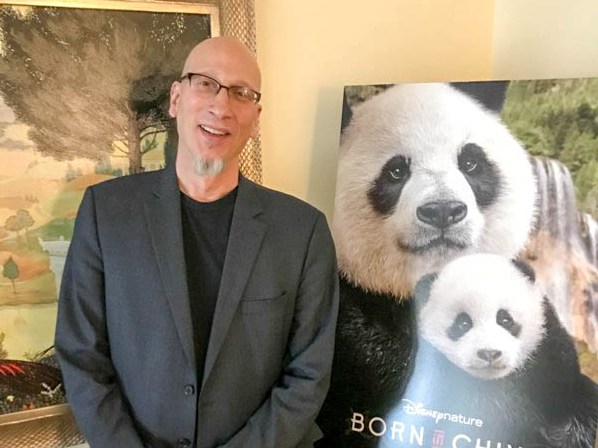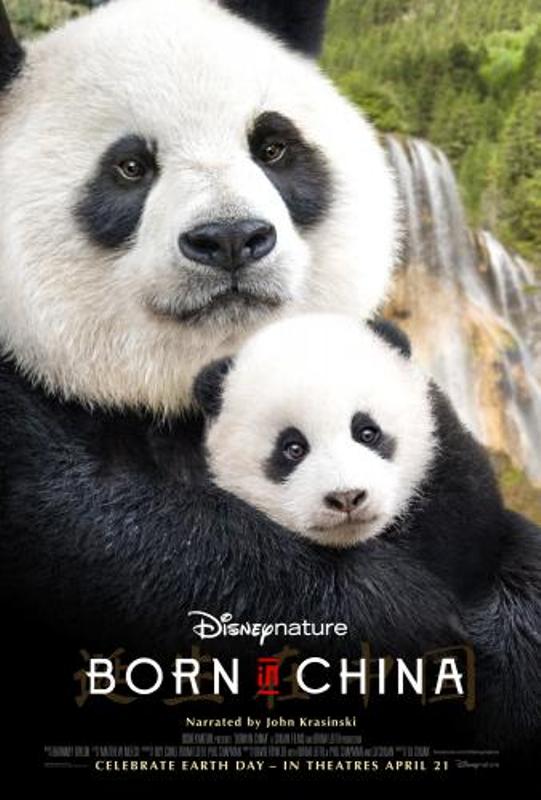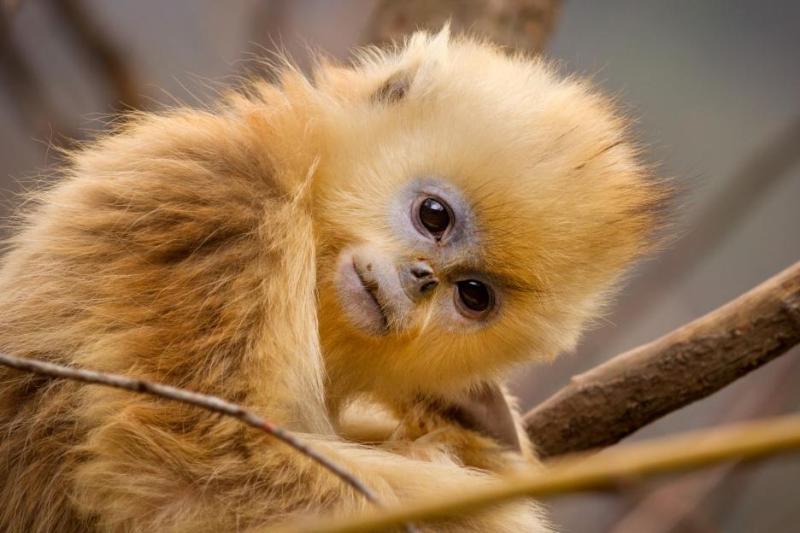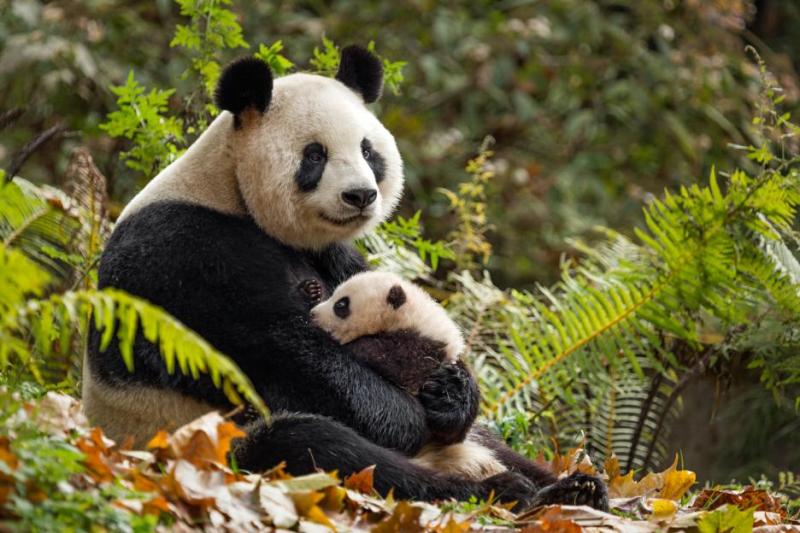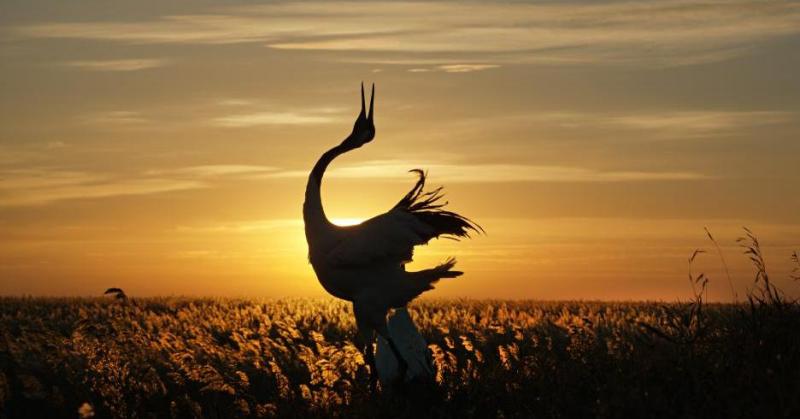A couple months ago I had a chance to sit down with a small group of reporters and interview Born in China producer Roy Conli. This was actually my second small-group interview with Mr. Conli; I had previously spoken with him at an event for Big Hero 6, one of my favorite Disney animation movies. Mr. Conli has always been polite and gracious to us members of the media and it was a delight to get to interview him again. The process of creating these Disneynature documentaries seems endlessly fascinating and complex, and I was thrilled Mr. Conli gave us a glimpse behind the film-making curtain. I hope you enjoy reading about the making of Born in China (in theaters today, April 21!)
Interview with BORN IN CHINA Producer Roy Conli
How do you create a storyline out of all the footage you receive?
The animals give us their story. I generally work in animation and … when you’re working in animation you start off with whole cloth, you start off with a script and you storyboard it and you screen it, and then you tweak it, and you end up with an image. In this particular case, you start off with an image and you work backwards to kind of track what that story is. And fortunately within this structure you have these amazing cinematographers who are out in the field journaling, literally everything they see through the day. So you’re really getting the history of what happened on the set every day. Then you add to that this amazing director, Lu Chuan, probably one of the greatest living Chinese directors, great storyteller, and he was on set some of the time but you can’t be on set all of the time because it’s literally, we had multiple crews working throughout the country at any one time. So really, the unsung heroes here are the cinematographers.
So when [the cinematographers] come back with the journals and the footage, we start putting together the story and start looking … now, we also get footage through over a year and a half. The process is kind of fascinating. Shane Moore, who is the cinematographer on the snow leopard unit, he went out, first of all, he’s going to one of the most inhospitable places on this planet, Qinghai plateau, 16,000 feet above sea level. It is often below zero [degrees], and as you can see it’s amazingly rugged … he did not get any shots of snow leopards until his 90th day. So there was big conversations in Los Angeles and Bristol and in Beijing, “Are we doing the right thing here? Is this gonna happen?” To further compound that, the visa, he was on a journalistic visa, it lasts for three months, so he had to actually leave the day after he got that first shot. We spoke with Shane thinking, “Okay are we on a fool’s errand? Is this not what we should be doing? Should we be looking for another animal?” And at that point Shane, who has tracked big cats throughout the world, said “no, I now know what their paths are.” There’s a whole process in terms of these cinematographers, they get to know their animals. So when you look at the magic of those stories, it’s the cinematographers who are really the unsung heroes.
How did the cinematographers balance between not trying to interfere with nature but also getting the shot?
Great question. First of all, we are committed to not interfering with nature. It’s a little hard with monkeys because monkeys are so interested in you, and they will actually perform for the camera, so in that case you have to work to keep them away from you [laughter]. But with snow leopards, they are the most elusive animal on this planet. Not only because they stay away from humans but because you can’t see them. Some of those shots still astound me. When we first looked and I was going “Where is it? … Oh *there’s* the snow leopard.” So within the structure of that, Shane, who as I said has shot big cats everywhere, started off at about 400 meters with incredible lenses and got shots but slowly but surly as Dawa was becoming familiar with him and knew that he was not a threat, he was able to get closer and closer. So a couple of shots he was able to get in at about 40 or 50 meters so that’s 150 feet or so away, which, and he knows what his limit is and at the same time, he didn’t want to over step it. For the pandas, sweet loveable beautiful cute, and 800 pounds, so a mother with her cub you don’t want to get that close to, but, and they are, as the film portrays, very solitary animals. They like being alone. So the cinematographers literally donned panda costumes, panda suits, and kind of sprayed themselves with panda scent and essentially they could get closer than you could the snow leopard but also kind of keep your distance. So it is the cinematographer who understands and these guys are brilliant; they’ve worked in the field and they’ve worked with animals, and some of these guys have been to Oxford and studied natural history for their entire life so they know what they’re doing.
With all the footage you guys get, how did you determine who would be the star of the story?
It’s interesting for me; one of the things that we wanted to make sure was that we didn’t just [have] a mother and daughter or mother and son story, which a lot of times that’s the meat of our relationships, and initially we were looking for that with the monkey shoot, and we started getting footage of this monkey who kept trying to get back to his family. And we were kinda taken with it, watching those reactions and that’s when, as we went through it, it became clear that Tao Tao was telling us the story we needed to tell. The animals always tell us the story. The story between, because we have a lot of footage of the baby sister with the mother, but Tao Tao was way more fascinating. And for me, one of the things that I love about this process is the animals are so reflective in many ways of our own being. And this is a personal observation, this is not by any means a scientific observation, but to see a little boy who felt ostracized or pushed out of his family … what little kid who has a baby brother or sister hasn’t felt that way? You can really understand that.
And then same thing with Ya Ya and Mei Mei. What mother isn’t overly concerned with her daughter or son going off into the world? To me that’s really kind of an amazing opportunity to reach to kids and adults alike and make them understand that we all live on one planet and that we all are, in the long run, creatures that are trying to protect our family.
How did you deal with some of the sad moments in the story?
We talked a lot, but the feeling was the investment in that story and how people fell in love with [the animals] was important. I look at it, and when we saw the outcome we were all very emotional, but I also, as a filmmaker, am not afraid of sharing that with kids. I kind of live by the, what I call the Pinocchio principal. The first film I saw as a kid was Pinocchio and I was terrified and I was scared and I cried, but I think I came out pretty healthy in the end. I think that, in this particular case when you’re dealing with nature, you just have to honest. And I don’t think, given what kids see after 8 o’clock at night on television, I think this is healthier than probably anything they will ever see.
How did John Krasinski get involved?
Actually I was the one who suggested John. I knew we needed someone who could be dramatic, I knew we needed someone who could be heartfelt, and I knew we needed someone who could be comedic. And I was looking and listening to voices and as soon as I was kind of listening to John, I understood that he was perfect for this. He’s a really really good actor and he’s an amazing comedian as well. And he has this amazing ability that I thought would pair with our writer David Fowler quite nicely. David has a very wonderful subtle wit and if you’ve ever watched Krasinski, his wit is so good. And I just said, okay, I think that’s a marriage that we’ll make. And that’s how that came about.
What’s the biggest struggle with making a documentary like this?
For me the biggest struggle is that it’s on three continents [laughs]. I’ve got my cinematography team coming out of Bristol England, my director is in Beijing and I am in Los Angeles, so essentially I believe there’s an eight hour difference to London and a nine hour difference on the other side so the only time we could all talk together was about 2 o’clock in the morning Los Angeles time. That’s not fun. But, that aside, that’s just logistics. I think the cinematographers who, you’ve got Shane Moore, who was living in a shack next to a monastery up on the Qinghai plateau, with a team of maybe six or seven guys, uninsulated, at 16,000 feet above sea level in this little shack that has one stove in the middle. They would leave before dawn and get back after dark and they would light a fire and that was their heat for the night. You’ve got Rolf Steinmann who you see in the end credits, he’s the one who’s doing the time lapse photography. Rolf was in areas that no westerner has ever been. Those shots with the chiru, that’s incredibly remote. And he’s probably the roughest of them all because he would dig a hole in the ground, cover himself, and sit there and shoot for days, and sleep in that hole, and it’s below zero [degrees] at night. That’s probably the extreme physical condition that was the difficult part. Mine was more sleep deprivation [laughter].
How did China react to the filming and to the movie?
They were totally cool. The Chinese government was very, very happy about our interest in their wildlife. In fact we premiered the film in August in China and they were so proud, and it’s the biggest box office of any nature film that they’ve ever had, biggest box office of any documentary they’ve ever had, and it was great to be there during that time because I met a lot of people, both civilian and government, who were just so proud of seeing this area that westerners were just not aware of. So to share that, it was great. And what was really cool is that it actually started a dialogue within China about the preciousness of their wildlife and the importance of conservation. Which is, I think, one of the great things that Disneynature does. And that’s why I would urge everyone to get out to the theaters that first weekend. Because that first weekend a portion of all proceeds goes to the WWF, the World Wildlife Fund, and that money will be targeted specifically for snow leopards and pandas. I’m so proud of the Disney company for what they have done on each one of these films. Right now the company has helped support 130,000 of chimpanzee reserve in Africa, 65,000 acres of wildlife reserve on the Serengeti, they’ve got 400,000 acres in US National Parks where we’ve got basically grants to help 75 both animal and plant life species that are shrinking. We’ve got 40,000 acre marine reserve in the Bahamas. So anyone who goes that first week will be contributing to the betterment of this world. Part of the importance of Disneynature is to educate, is to inspire, and to entertain, and I think you call awareness to [conservation efforts] by entertaining and not necessarily by preaching. That’s kind of our philosophy.
Are you going to do more Disneynature films or are you going to return to animation to work on Big Hero 6 2?
[laughs] I will not leave animation; it’s what I love and I actually have two projects I’m working on right now. I am helping out on another Disneynature right now; I’m not really producing this one, I’m kind of helping out just in terms of structure. I will come back and do another one of these, I’d love to produce another one of these, only because I think it’s so important, and the message we should share and how it … look, I know how I felt when I was a kid because I watched Walt Disney’s original True Life Adventures. Between 1948 and 1960 he produced 13 True Life Adventures and won Academy Awards® for them, those were re-purposed all the way into the ’70s on Wonderful World of Disney. I saw these things and for a kid who grew up in the suburbs of Los Angeles this was my introduction to nature. This is how I learned about nature, and how I became passionate about nature and got into backpacking and all that kind of stuff, because you fall in love with what the world has to offer. So yeah, I’ll do another one of these, I’ll fit them in between my [animation] projects.
BORN IN CHINA is rated G and opens in theaters everywhere April 21, 2017. Follow Disneynature on Facebook for more info!

